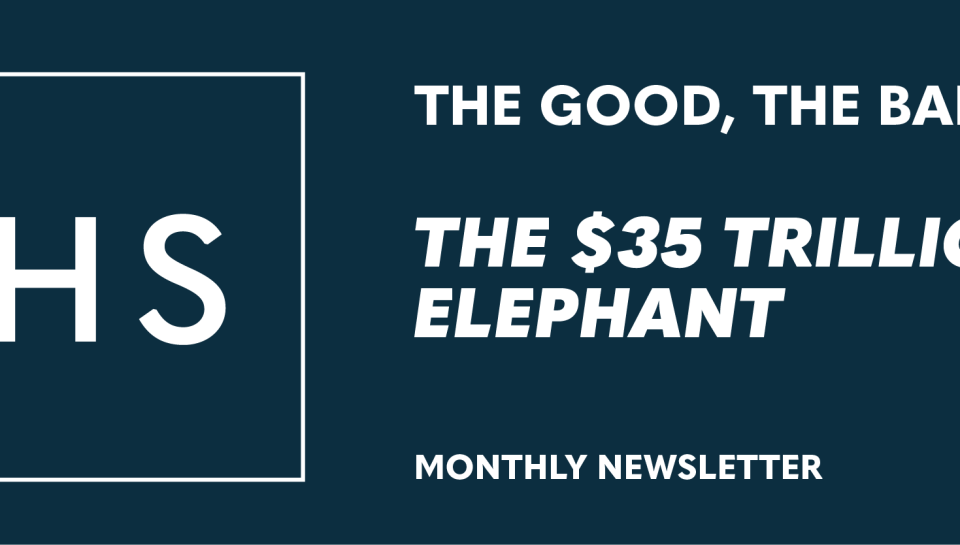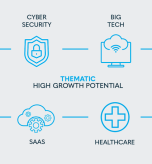The Good: High Street’s Global Yield Product – Defensive Qualities
In a time marked by economic and political uncertainty in the US, investors seeking to mitigate risks are increasingly shifting their focus from higher-risk assets to more stable options.
High Street’s Global Yield Product focuses on high-quality, defensive companies that return capital to shareholders through dividends or share buybacks, which represent the total yield for equity investors. Additionally, the Product includes investment grade fixed income investments, further enhancing defensiveness with regular coupon income and the potential for capital gains from favourable interest rate changes. The Product aims to maintain a forward total yield of at least 4%.
Recently, two such companies within the Product’s holdings have captured investor attention with their impressive earnings: Morgan Stanley and Philip Morris. Morgan Stanley saw its share price soar over 7% following its third quarter earnings announcement, reaching record highs. The firm reported a notable 50% increase in investment banking fees, totalling $1.5 billion – outpacing all its competitors. This resurgence follows a challenging two years marked by the historic interest rate hikes by the US Federal Reserve in 2022, which had stifled an industry that thrived during a period of record low rates.
Additionally, Morgan Stanley’s Wealth Management division experienced significant growth, attracting nearly double the net inflows compared to the previous year. The division brought in $64 billion, pushing total client assets to nearly $6 trillion. The Wealth Management segment is an important differentiator when compared to its investment bank peers, as it provides diversification against volatile investment banking revenues. Year-to-date, the share price has risen by 31.4%, aided by dividends and share repurchases. The company is well capitalised, allowing for further share repurchases and trades on an attractive total forward yield of 5.3%.
Philip Morris also surprised investors with their third quarter results, leading to a more than 10% increase in its stock price – a rare feat for companies in the tobacco sector. A key contributor to this success was the booming demand for their oral nicotine pouch, Zyn, which achieved 41% year-over-year growth in the US, despite facing supply constraints due to overwhelming demand during the quarter. Smoke-free products now account for 38% of Philip Morris’ sales, with management aiming for these offerings to constitute two-thirds of revenue by 2030. Year-to-date, the company share price has increased by 46.6%, significantly outperforming the S&P 500. Philip Morris has never failed to pay a dividend since its separation from Altria in 2008, with its last 5-year annual dividend growth rate averaging 2.7%. Looking ahead, analysts expect it to pay a forward dividend yield of 4.4%.
Investors seeking to mitigate risk through more stable, yielding assets can gain exposure to the High Street Global Yield Product in either USD or ZAR. The US Dollar-denominated offering is via Swiss bank Julius Baer, and the ZAR-denominated option is through Standard Bank. For more information, please feel free to contact us.
The Bad: Managed Chaos
In 2024, the US Department of Justice (DOJ) has garnered attention for several high-profile lawsuits, the latest of which targets the multinational payment-processing company Visa. The DOJ claims that Visa operates as an illegal monopoly, unlawfully accumulating the ability to impose fees that far exceed what would be possible in a competitive market.
Another significant case this year involves Alphabet, Google’s parent company, which faced a second antitrust lawsuit from the DOJ in September. This comes just a month after losing a landmark case concerning its monopoly in internet search. In this latest lawsuit, Alphabet is defending itself against allegations that its advertising business operates as a monopoly, resulting in higher ad prices for customers. The DOJ is considering the possibility of breaking Alphabet into smaller companies, marking the agency’s first attempt to dismantle a company for illegal monopolisation since the failed efforts to break up Microsoft two decades ago.
The current system took shape after World War II. During this time, wage controls led companies to offer health benefits to attract workers, giving rise to employer-sponsored health plans. These programs gained popularity, and to this day similar plans cover approximately half of Americans. The appeal was mutual: employees received healthcare, while employers benefited from tax incentives. However, this system excluded those who were unemployed or whose employers didn’t offer health benefits. To address these gaps, the government introduced Medicare and Medicaid – programs designed to provide healthcare to seniors, disabled individuals, and those with low incomes who couldn’t afford private insurance.
In the late 1990s, health insurers introduced government sponsored Medicare Advantage plans and similar privately administered Medicaid plans to streamline the fragmented Medicare system. These programs proved highly successful for insurers, as the profit margins on Medicare and Medicaid enrolees were generally higher than those of their private counterparts, resulting in increased profits per patient. However, recent cost trends have begun to create headwind for these insurers, who are unable to pass on rising expenses to Medicare and Medicaid enrolees as they can with commercial members.
Shifts in utilisation trends began late last year as patients ‘caught up’ on treatments they neglected or postponed during the pandemic. More recently, insurers have reported rising costs driven by increased prescriptions of high-cost drugs and hospital practices that involve billing for more severe or costly procedures than were actually performed. A more troubling issue highlighting system dysfunction is the growing mismatch between government reimbursement rates and insurer costs. This shift follows recent Medicaid eligibility adjustments, which have left insurers covering a more complex and costly patient base.
Private insurers have become embedded in the U.S. healthcare system, often operating with limited competitive advantages. While some insurers such as Humana focus exclusively on government-sponsored plans, others are more diversified across both public and commercial participants. UnitedHealth, the largest U.S. insurer with a market cap of $520 billion, has delivered a remarkable annualised return of 21% over the past decade. Its expansive network and balanced approach across various plan types enable it to navigate market pressures with resilience. We believe UnitedHealth’s unique positioning and strategic diversity underpin its stability, and we remain confident in its long-term potential, continuing to hold UnitedHealth across our funds.
& the $35 Trillion Elephant
With the 2024 US presidential election just weeks away, economic policy stands as a focal point for investors assessing the potential trajectory for markets into the rest of the year and beyond. Core issues like inflation, surging national debt, and interest rate expectations continue to steer market movements. Recently, the US Dollar has surged to its strongest level since August, boosted by month-end jobs data that significantly exceeded expectations. However, there has been increasing speculation that a potential Trump win is also driving the currency higher.
Betting markets are reflecting an increasing confidence in Trump’s chances, while the Financial Times’ Poll Tracker has him leading in five out of seven crucial swing-states. A Trump win would likely mark a significant shift in US economic policy. Proposed plans like increased tariffs are expected to bring inflationary pressures, which would likely reduce the speed of Federal Reserve rate cuts. Alternatively, a Harris administration is expected to continue their emphasis on inflation reduction through targeted fiscal measures and green investment. Her policies could moderate inflation through corporate tax reforms, potentially dampening short-term market growth in favour of longer-term economic stability. Although this approach could ease pressures on the Fed to sustain elevated rates, it is still unlikely to negate increased government spending.
Yet despite their differences, both candidates are united by their notable avoidance of the $35 trillion elephant in the room – the nation’s ballooning debt pile. Tellingly, the word “debt” was not mentioned once at the Harris vs Trump presidential debate in September. This is despite Congressional Budget Office projections that the national debt in 2025 will be larger than GDP for the first time since the second world war. The bipartisan unwillingness to address the issue could be because both candidates are expected to significantly add to the burden. The Committee for a Responsible Federal Budget estimates that Trump’s and Harris’ policies would add $7.5 trillion and $3.5 trillion, respectively, to the debt between 2026 and 2035. At current rates the national debt is growing by around $1 trillion every 100 days. In a worst-case scenario this could ultimately trigger a fiscal crisis, and it will continue to be a crucial topic, whether it is discussed by presidential hopefuls or not.
Overall, the election is increasingly seen as a ‘binary event’ with tail risks on either side. The result is currently too close to call, with victories in just a handful of crucial swing stakes likely to determine who takes the White House on November 5th. Currency and bond markets remain highly sensitive, given their strong association with the state of interest rates and potential changes in longer-term monetary policy. However, amid this heightened noise and volatility, investors would be best served by staying focused on the long-term, backing companies capable of navigating policy shifts and generating compounding cashflows over a sustained period of time.





